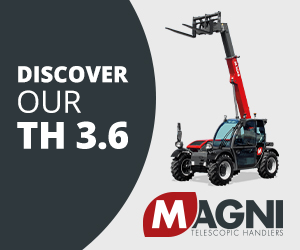Aerial Industry Concerns Voiced at Public NIOSH Meeting
In an effort to keep working people, businesses, and the U.S. economy strong by reducing worker injuries and illnesses, NIOSH first joined with employers, workers, and academic institutions in 1996 to establish the National Occupational Research Agenda (NORA) to develop a collaborative blueprint for planning and conducting research to prevent serious, disabling, and fatal workplace injuries and illnesses. In its second decade, NORA will take an industry sector approach, and research councils are now being formed to lead the direction of the new NORA effort.
On March 13, people from across the country attended a public town hall meeting in Washington to discuss top issues in workplace safety and health. Members of the aerial lift industry, including Brad Boehler, P.E., director of product safety for Skyjack and an AWPT operator instructor, made presentations during the town hall meeting about the safe use of aerial lifts.
"I believe that any manufacturer of aerial lifts understands their responsibility to safeguard the user, and these producers are actively pursuing methods to create machines that are practical and safe for use,” Boehler said. “However, although extremely important, the design and manufacture of aerial work platforms is just the first step in ensuring the safety of the worker using this equipment.”
Factors that Boehler cited for safe operation while working at heights include using the proper type of lifting equipment for the jobsite condition; properly maintaining and readying equipment for safe use; and properly training the operator.
“Currently, the industry is struggling with various issues, some of which derive, to an extent, from the lack of clarity within the regulations as laid out by OSHA,” Boehler said. One example he noted is the use of fall protection on scissor lifts. OSHA defines scissor lifts as mobile scaffolds, and a guardrail system is the required method of fall protection, he said. However, some manufacturers, owners, users and safety professionals still require the use of a harness and lanyard. The fall protection question is additionally convoluted when the question is asked whether or not the fall protection should be in the form of restraint or arrest, he added.
Skyjack and NIOSH are currently working on a project entitled, “Fall Prevention for Aerial Lifts in the Construction Industry,” and the team has completed the physical testing of a scissor lift, finding that the subject lift far exceeds the ANSI standard's requirements for stability. Human subject testing has determined the amount of force that a worker can actually impart to the lift while performing various tasks, and preliminary data indicates that the maximum force exerted is close to the 100 pounds specified in the ANSI standard.
“How can NIOSH continue to help the aerial work platform industry to create the safest at height environment for workers?” Boehler asked. The current scissor lift project with Skyjack and NIOSH needs to continue with the completion and validation of a computer simulation of a generic scissor lift, and data already collected will be used to ensure that the virtual lift reacts in the same manner as its physical counterpart, he said.
“This model can then be placed into various scenarios to find the true limits of the unit and determine if there are any areas where improvements can be made,” he said. “My belief is that we will find that the lifts, if used within the parameters set forth by the manufacturers, are safe, and that we are correct to concentrate on training operators to know and stay within these guidelines for their own safety. Evaluation of the requirements and effectiveness of this operator training could also be another NIOSH research project.”
Continued research could also attempt to clarify the use of fall protection within scissor lifts specifically, he added, and studies could be performed to determine whether lanyards and harnesses are the appropriate fall protection device in any given situation and if so, what type should be used. Other testing could be undertaken to determine the consequences of an arrested fall on a typical scissor lift anchorage system.
There are a variety of different approaches to pursue the safe use of aerial work platforms, Boehler said, but “ultimately, 'Education in Elevation' will create a safer workplace for everyone performing tasks at height using an aerial work platform.”
The NORA Symposium 2006 will be held April 18-20 at the L'Enfant Plaza Hotel in Washington, where NIOSH will celebrate the success of the first decade of NORA and launch its second decade of the program.











